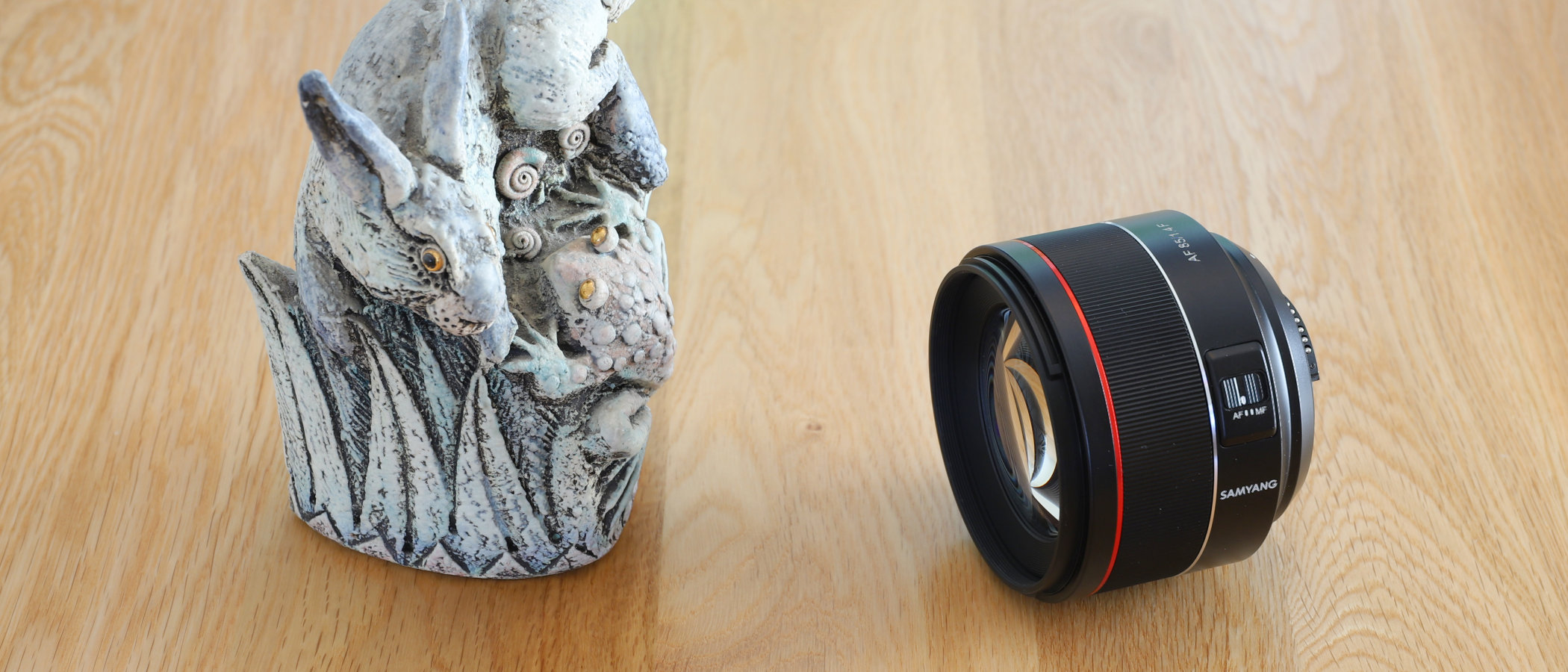Digital Camera World Verdict
It might not be the sharpest tool in the box but, when it comes to portrait lenses, how much do you really want to focus attention on the signs of premature aging? The Samyang AF 85mm f1.4 is perfectly sharp enough to capture the finer points of portraiture, while delivering a soft and creamy bokeh and a smooth transition between focused and defocused areas. And it’s refreshingly compact, lightweight and affordable compared with its competitors.
Pros
- +
Quite compact and lightweight
- +
Relatively inexpensive
- +
Good image quality
Cons
- -
No optical stabilizer
- -
No full-time manual focus
Why you can trust Digital Camera World
Magic numbers for portraiture with a full-frame camera are often regarded as 85mm and 1.4, which is why the Samyang AF 85mm f/1.4 is likely to be such a crowd pleaser. Also sold as the Rokinon 85mm F1.4 AF in some territories, this winning combination enables you to shoot from a comfortable distance without crowding the person you’re photographing, while also making a really shallow depth of field possible.
However, if you thought that all modern 85mm f/1.4 lenses were big, heavy and expensive, this new Samyang will make you think again. As with the company’s Samyang AF 14mm f/2.8 autofocus lens, the Samyang AF 85mm f/1.4 is available in Canon EF or Nikon F mount options, and has a different design to Samyang’s earlier 85mm f/1.4 autofocus lens for Sony E-mount cameras.
• Read more: Best portrait lenses for Canon

Samyang AF 85mm f/1.4: Specs
Mount: Canon EF, Nikon F
Lens construction: 9 elements in 7 groups
Angle of view: 28 degrees
Diaphragm blades: 9
Minimum aperture: f/16
Minimum focusing distance: 0.9m
Maximum magnification ratio: 0.11x
Filter size: 77mm
Dimensions: 88x72mm (C) 88x75mm (N)
Weight: 485g (C) 480g (N)
Samyang AF 85mm f/1.4: Build and Handling
Typical of Samyang autofocus and manual-focus lenses, this one has a high standard of build quality. The metal mounting plate and up-market plastic barrel feel solid and well-engineered, complete with weather-seals. Inside, the optical path is based on nine elements in seven groups, and includes a hybrid aspherical element. ‘Ultra Multi Coating’ is also applied to keep ghosting and flare to a minimum.
Easily manageable, the Samyang is only about half the weight of the latest Canon and Sigma 85mm f/1.4 lenses, and shaves about 100g off the weight of Nikon’s current AF-S 85mm f/1.4 lens. It feels comfortable and well balanced for handheld shooting, and its comparatively diminutive size makes it arguably less intimidating for portrait sitters.
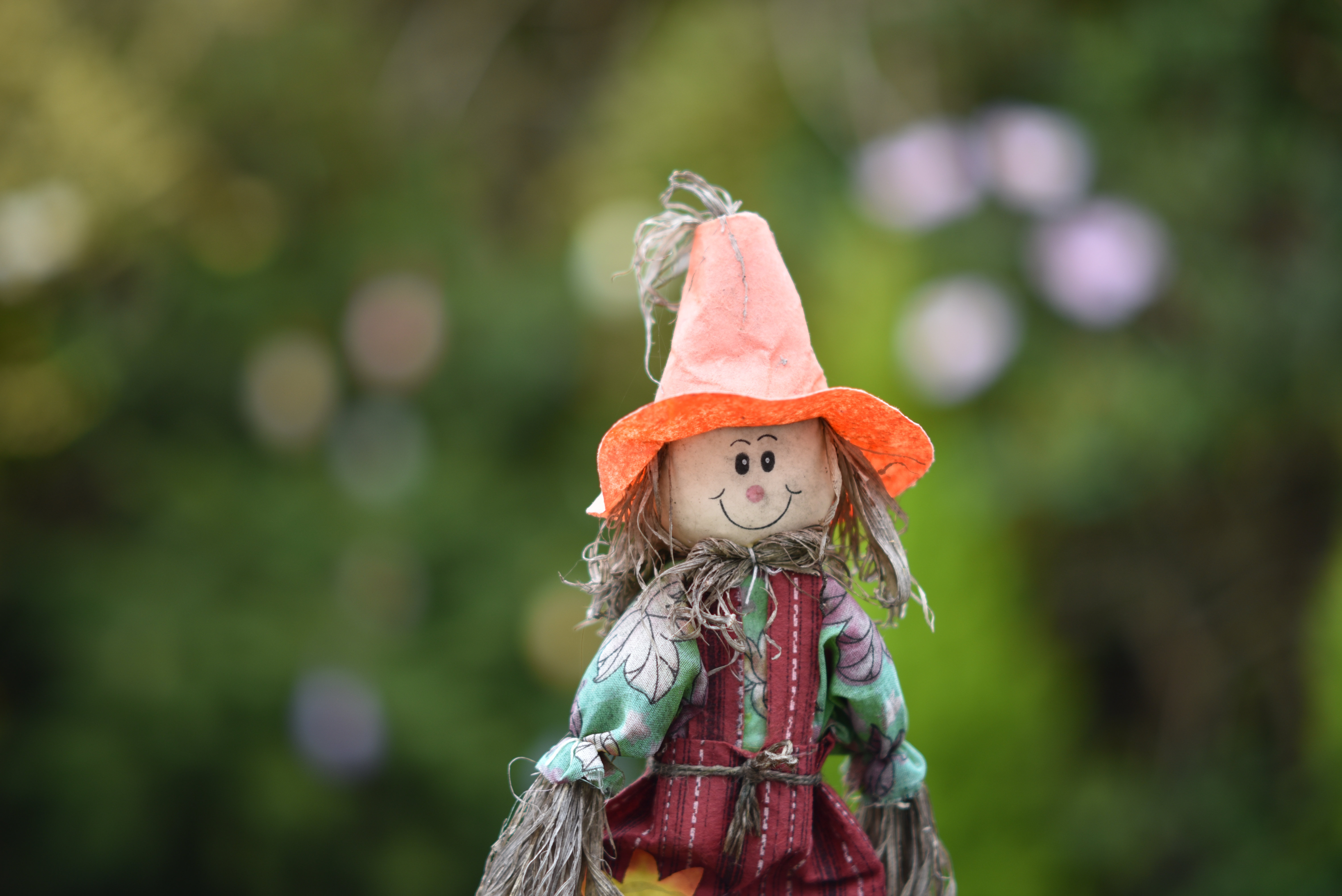
Onboard controls boil down to a single autofocus/manual focus switch and a manual focus ring. The autofocus system itself is based on a Dual LSM (Linear Supersonic Motor), which is fast and virtually silent in operation. However, unlike with an ultrasonic ring-type arrangement, the manual focus ring has an electronic rather than mechanical coupling. The upshot is that the focus ring only works when power is supplied from the camera, for example after a light press of the shutter button.
Samyang AF 85mm f/1.4: Performance
The lens is quick to autofocus with very good accuracy, even under dull, indoor lighting conditions. The fly-by-wire manual focus ring enables very fine and precise adjustments, especially when using a magnified preview in live view mode. However, when testing the Nikon-mount version of the lens with DSLRs in live view mode, we experienced consistently poor autofocus accuracy.
Contrast is impressive even when shooting wide-open at f/1.4 and centre-sharpness is pretty good too, although it drops off more than usual towards the edges. That’s no real problem for portraiture, and the noticeable vignetting can also be seen as a bonus. When stopping down a little to gain a bit more depth of field, bokeh remains good, aided by a well-rounded nine-blade diaphragm.
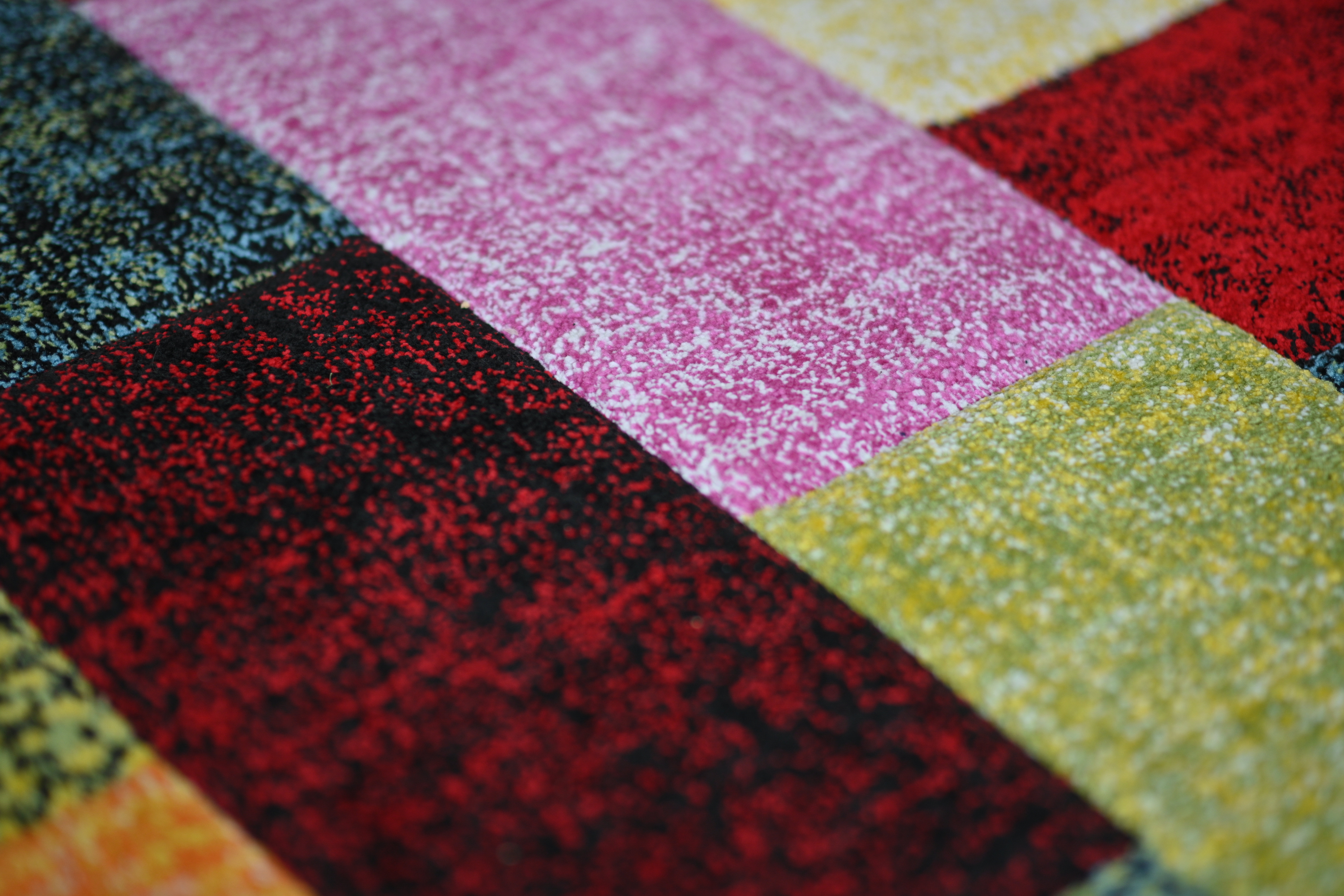
Samyang AF 85mm f/1.4: Lab Tests
Sharpness
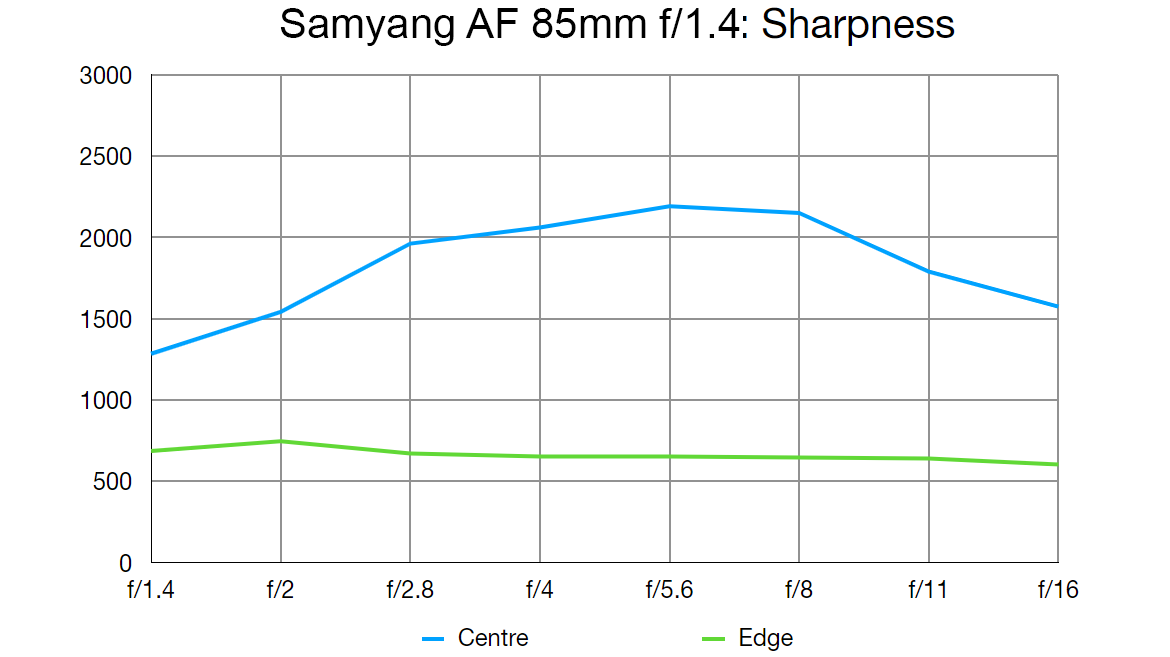
Centre-sharpness isn’t overly impressive at f/1.4 but is rather better at f/2 and excellent from f/2.8 onwards. Edge- and corner-sharpness are comparatively poor.
Fringing
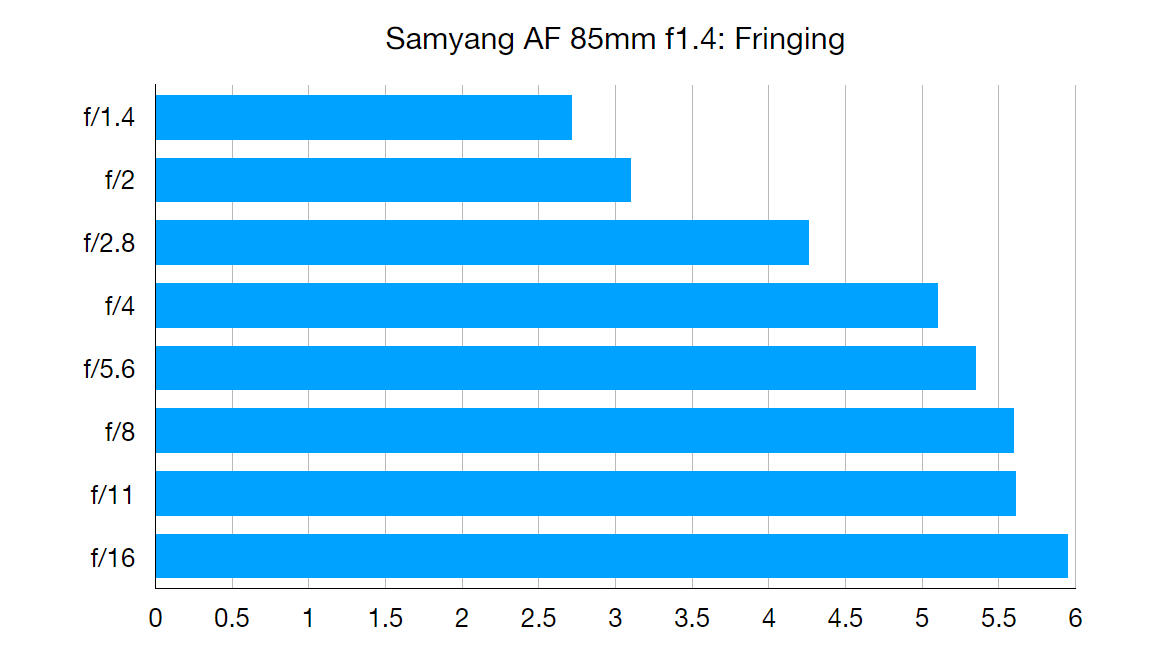
Lateral chromatic aberration is reasonably well controlled at f/1.4 but can be rather noticeable at narrower apertures. It’s rather worse than in most competing 85mm prime lenses.
Distortion: 1.16
A little pincushion distortion is revealed by our lab tests but it’s generally quite hard to spot in real-world shots.
Samyang AF 85mm f/1.4: Verdict
If you’re a professional portrait photographer, the chances are that you’ll want to splash out the big bucks on a Canon or Nikon 85mm f/1.4 lens. For the rest of us, who want a decent portrait lens in the bag for occasional use, the Samyang is a more attractive buy, at less than half the price. That said, it’s not massively less expensive than the Sigma 85mm f/1.4 DG HSM Art lens, which delivers better image quality and all-round performance. Either way, the relative compactness and lightweight build of the Samyang makes it easy to live with.
Read more
Best camera for portraits
Best portrait lenses for Nikon users in 2019: for DX and FX DSLRs and Nikon Z
Best backdrops for photography: collapsible backgrounds for the home studio
Matthew Richards is a photographer and journalist who has spent years using and reviewing all manner of photo gear. He is Digital Camera World's principal lens reviewer – and has tested more primes and zooms than most people have had hot dinners!
His expertise with equipment doesn’t end there, though. He is also an encyclopedia when it comes to all manner of cameras, camera holsters and bags, flashguns, tripods and heads, printers, papers and inks, and just about anything imaging-related.
In an earlier life he was a broadcast engineer at the BBC, as well as a former editor of PC Guide.
